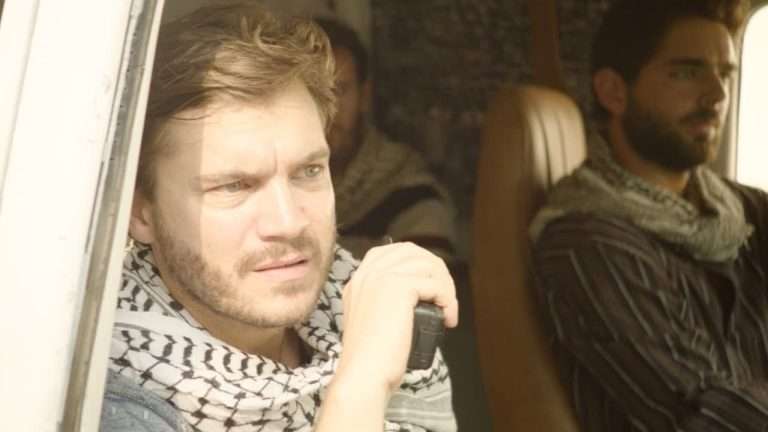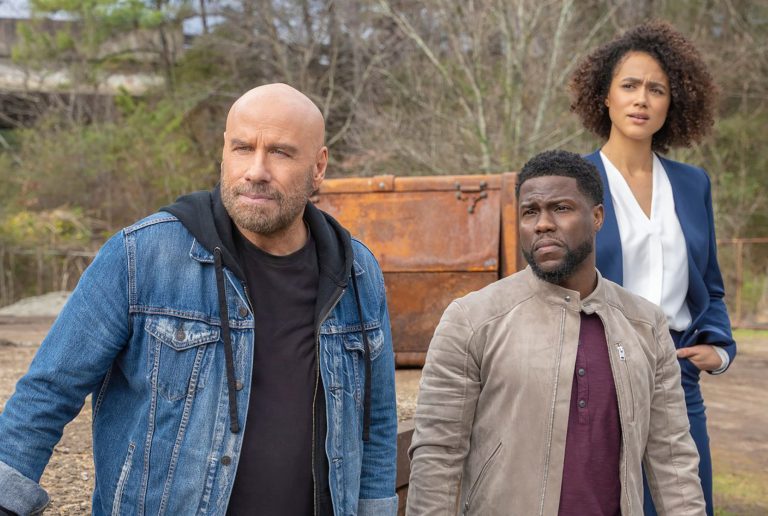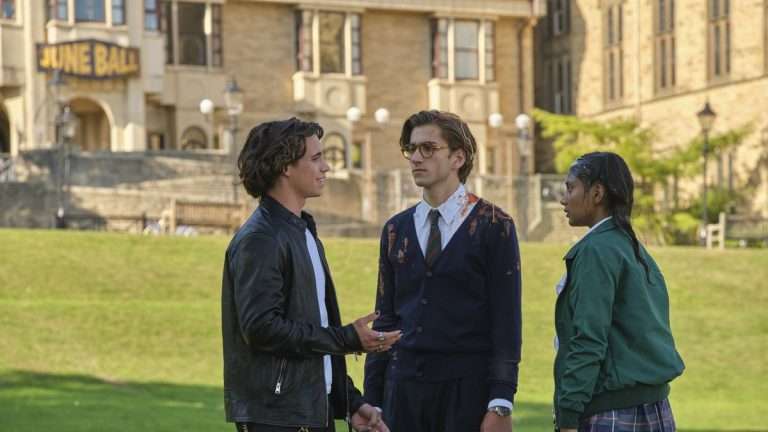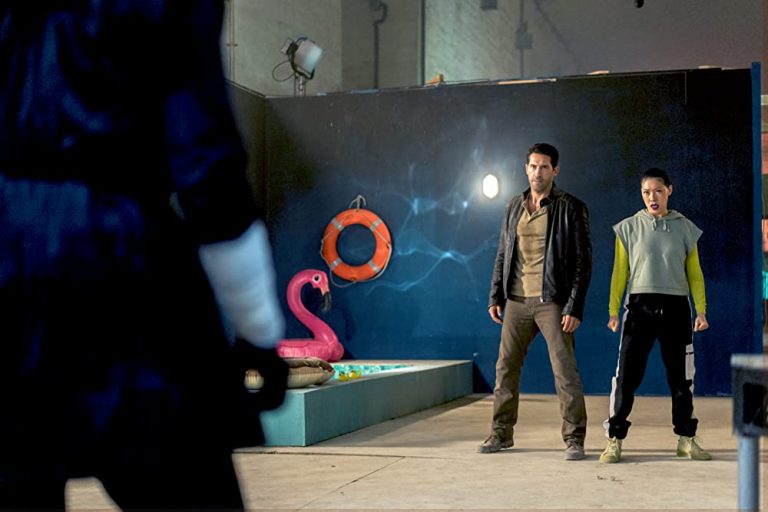Bernardo Britto’s directed, written, and edited feature “Omni Loop” might be the nth iteration of “Groundhog Day.” Still, there is no question about the wish-fulfillment nature of the premise, as well as a repetitive structure ingrained within the film that allows for character progression through realization. The best films dealing with this premise usually balance out the sci-fi and the personal, with the closure of the personal leading to a bow in the sci-fi aspect. “Omni Loop” doesn’t stray away from this basic premise but strays away from the details in exciting and frustrating ways.
Omni Loop (2024) Plot Summary & Movie Synopsis:
What is Zoya suffering from?
When the movie begins, we are already introduced to the quirky tone that Bernardo Britto will play with for most of the runtime. As Zoya wakes up from her hospital bed and is discharged, we learn that a black hole is growing inside her chest, and she has only five days before she will be sucked into oblivion. If that sounds weird, that is a problem, because that is the central supposition you must accept for the film to work.
Then again, for Zoya Lowe, bestselling author of science novels and tomes of quantum physics, it is arguably not something she is unfamiliar with. At the very least once the viewer latches onto her somewhat dispiriting attitude, one can slowly start to already understand what is happening even before she expositionally states her condition much later—a blase sentiment, almost as if she has lived through all the events of this week before.
If one listens to Zoya as she explains to one of the residents of the old age home where her mother resides and where she has just rescued the resident from being covered by bird poo on account of knowing exactly when the said excrement would fall on the bench—she has done this before. That night, she would be subjected to a surprise birthday party by her family, consisting of her daughter, her husband Donald, and her daughter’s fiance. During that celebration, she would suffer from a nosebleed. Realizing that this is the end, she pops in one pill, which pulls her back in time for a whole week, with Zoya finding herself back in her hospital bed. Rinse and repeat. From the tenor of the conversation, it is clear that Zoya had been doing this for a while.
How does Zoya meet Paula?
As one can imagine, staying within a time loop and learning every movement and pattern could become frustrating for anyone, especially Zoya, who we realize is a scientist, searching for a solution. If one chips away at that, which is perhaps what occurs as she finds herself repeating through the motions, it’s more about finding something different.
And she does find something different in one of those repetitions—as she finds herself on the verge of a panic attack, she gets up from the park bench but almost immediately collides with a young woman. The woman, Paula (Ayo Edibiri), is a student studying at MDC (Miami Dade College), under Professor Handel, and her research topic is time. She would, coincidentally, pick up one of Zoya’s textbooks about quantum physics, bringing her within this vicinity.
It’s the meeting with Paula Campos that jogs Zoya’s brain, encouraging her to entertain the idea of an alternative to simply fading away, even as her husband tries to counter that by stating there isn’t any, and maybe all this is just an elaborate method for Zoya not to spend time with her family. However, in this iteration, before popping a pill, she goes outside and calls Laura (her phone number was scribbled in the book) and promises her that she will come to visit her “the next time” and they will do something great.
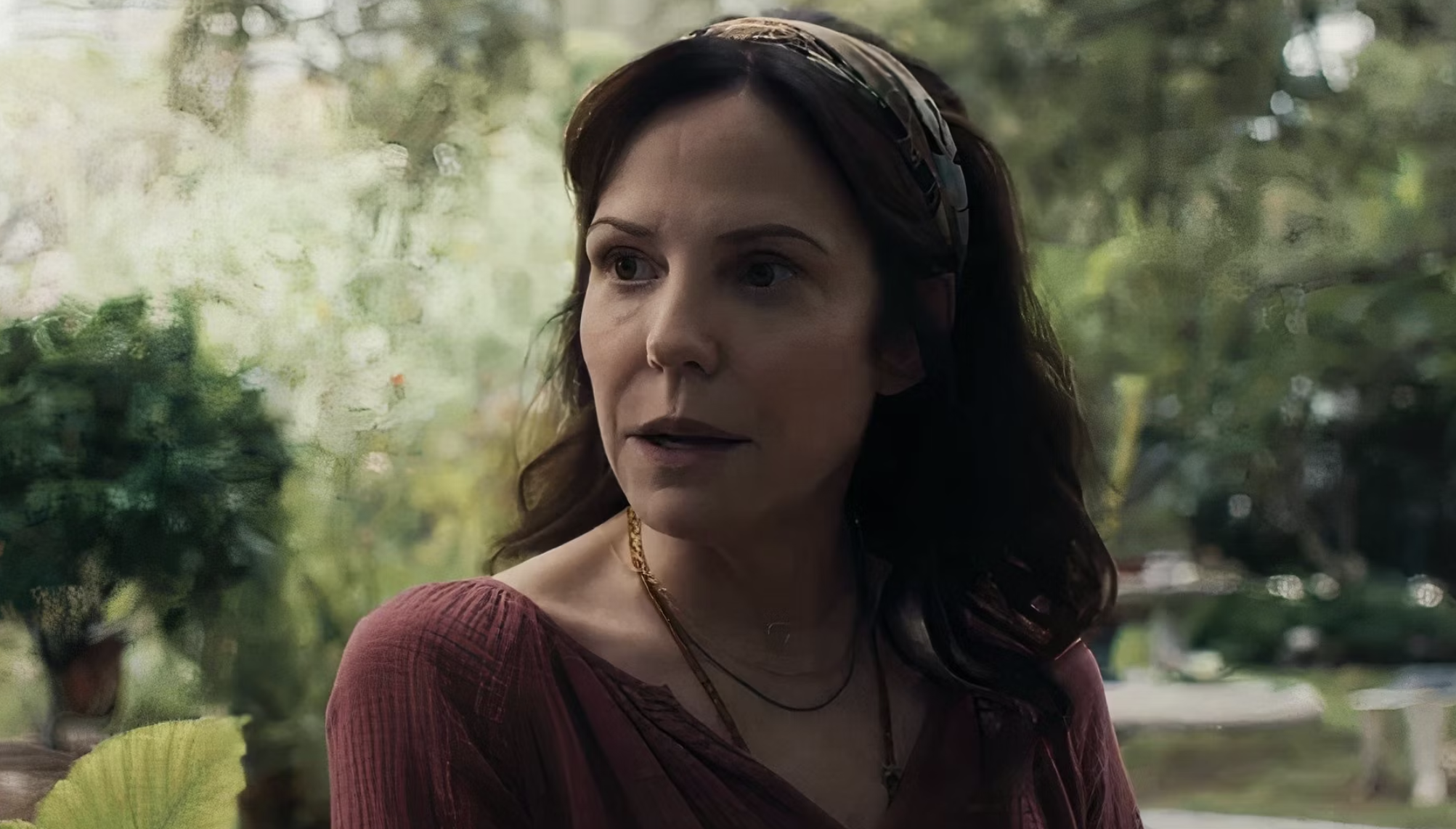
Cut to the restarting of the week again, with her waking up from the hospital bed. Except this time, she sneaks away from the hospital while her husband and doctor are conversing with the doctor, waves a taxi, and drives up to Paula’s address. However, as is logically evident, Paula doesn’t believe her for the first time. We are reasonably sure, due to Britto’s clever editing, that Zoya would repeat this meeting at least two or three times before finally, on the fourth try, she would be able to recite all of the actions Paula takes, including the fact that her cat will mewl immediately after Paula lets out a surprised squeak. That turns out to be the trick.
Zoya’s plan in teaming up with Paula is to research how the pills work. She had tried to study the pills almost 30 years ago before life got in the way of her academic career. The pills have a strange origin story, in that she found them when she was a kid, in a field, a week after her father had died. The pills were packaged in a bottle with her name ingrained on the cover already, and she would imagine hearing a whisper in the wind, telling her that “she would do great things.”
Each pill stays in the “system” for a specific amount of time, and while the pill is present in the system, multiple pills being ingested wouldn’t work at all. So Zoya wouldn’t be able to go further back in time, or back, because there isn’t any way to produce a cumulative impact. But she believes that studying the pills and breaking them down to their constituents can allow her to tweak their effects, allowing her to travel back in time longer, maybe when she had been Paula’s age, and continue her research before life forced her to give it up.
What relationship does Zoya share with Professor Dusseldorf?
Paula’s “lab” is almost like a massive storage room, with the instruments covered to fend off dust. As the two of them start working, Zoya explains that the pills don’t behave like conventional matter. They don’t melt, dissolve, or behave in a linear transitory pattern like most matter. It’s almost as if they constantly regenerate or maybe stay frozen in limbo while time moves forward. According to Paula, the only way to decode the pill is to break it down and study the sequencing.
But Zoya counters by stating that it hadn’t been done successfully, and thus she would want to continue her research, which took the path of replicating the process of regeneration of the pills. That would take forever, but “forever” isn’t a problem anymore for Zoya if she is stuck in the time loop.
However, Paula has a brainwave with her believing that someone can help them. As she rushes out of the lab, Zoya shrugs and walks out of the lab to roam around, only to come across Professor Dusseldorf, her old professor. Dusseldorf is confused about Zoya’s intentions to use a lab at her old alma mater and invites her to his office. As they walk back (Dusseldorf in his wheelchair), she learns that Dusseldorf got rehired at this community college by Zoya’s old ex-boyfriend and research partner Mark Harrison.
Dusseldorf, however, is shocked at finding Paula sneaking around in his office. As Paula tries to explain, Dusseldorf ignores her and raises a tirade on Zoya, reminding her that while her test scores reflected her potential and talent, the fact had been that she was lazy and not smart enough and that she had squandered every opportunity Dusseldorf had presented to her. And he is sure this is again one of those numerous instances of her searching for a new shortcut.
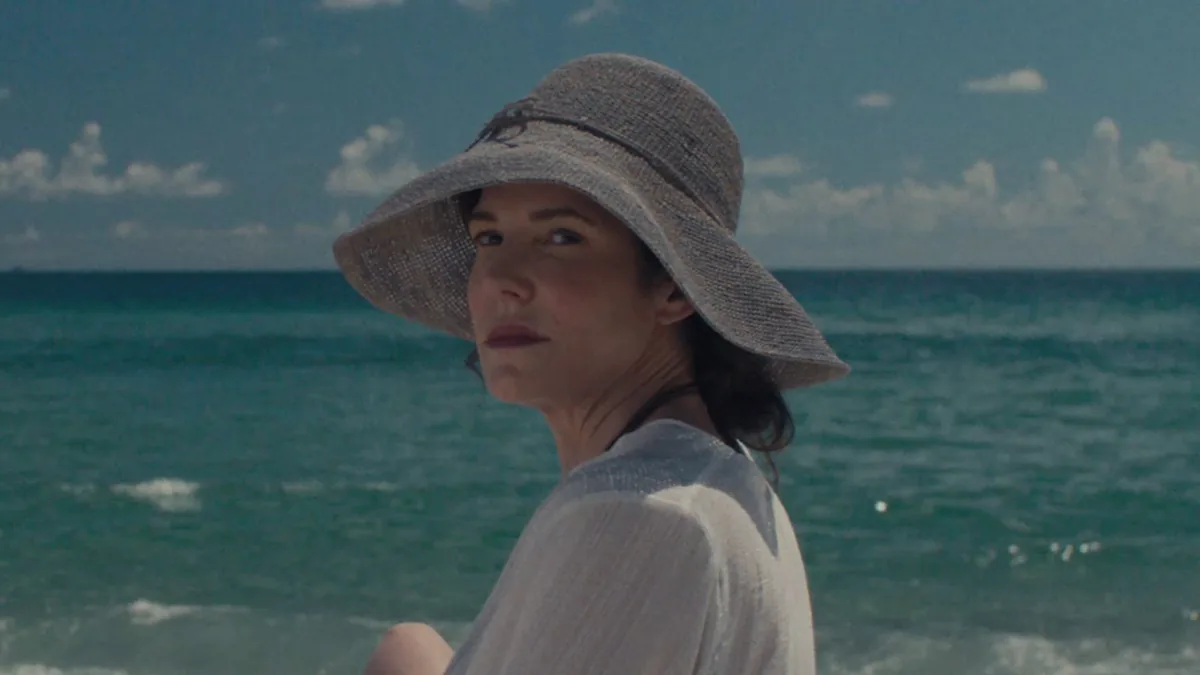
Unfortunately, he hadn’t been wrong. As she explains to Paula after walking out of Dusseldorf’s office, she could get great scores in her tests because she would utilize the pills every time she would make a mistake, leading to her going back in time five days and retaking the test. Paula, meanwhile, to cheer Zoya up, shows why she had been sneaking around Dusseldorf’s office—so that she could sneak out the apparently empty glass box containing the nanoscopic man.
What is the nanoscopic man?
In this universe created by Britto, it is evident that weird science fiction experiments do occur to the extent that accidents such as this aren’t mind-boggling events anymore. Paula’s employer, Professor Handel, would conduct experiments to shrink down a volunteer to a subatomic level, but as it turns out, they hadn’t figured out how to stop that. Now this nanoscopic man, stuck in this empty box, would be shuttered away, with Paula lamenting that this had been a waste of funds.
To conduct their experiment, they would have to bring him to a meat locker, which works as a dry-ageing room, as the nanoscopic man cannot be brought to room temperature on account of being affected by bacteria, mould, etc. There is a transmitter in his hazmat suit that can help him communicate with them through a heads-up display connected to the box, while Paula can communicate with him through a receiver.
The plan is to drop the pill inside the box, whereby the nanoscopic man would study the pill through the particle detector in his suit and send the data through. Since the nanoscopic man is in a subatomic dimension, time moves differently for him, with a speed a hundred times slower than normal. So he would be able to relay data consequently much faster than expected. He might not ever die; just keeps on shrinking until he just disappears.
The data is relayed to Paula’s computer almost immediately, and Paula is surprised upon realizing that Zoya’s hunch had been right—the pills are constantly regenerating and mutating, cycling through different structures. As they finally consolidate all the structures, they start going through each of the structures and work their way up to analyze and thus attempt to break down the pills.
But as it turns out, it’s to no avail because they slowly exhaust every option as Zoya cycles through more and more iterations. Paula, every time after being convinced, would try to persuade Zoya to send the pills to another lab to be tested, but Zoya exhibits reticence. It’s almost as if Zoya loves to solve problems, but the grind and networking of academia and the work of research is something she isn’t too fond of.
Why is Paula helping Zoya?
The next step for the duo is to locate Zoya’s old research notes, and Zoya, after another iteration, convinces Paula to accompany her to the Carville Old Age home, where her mother and Paula’s grandmother are admitted. There she searches for her old research notes but is unable to find them within her mother’s notes of psychology. She does find an old newspaper cutting off her ex-boyfriend Mark Harrison being appointed as head of IASA within those same notes.
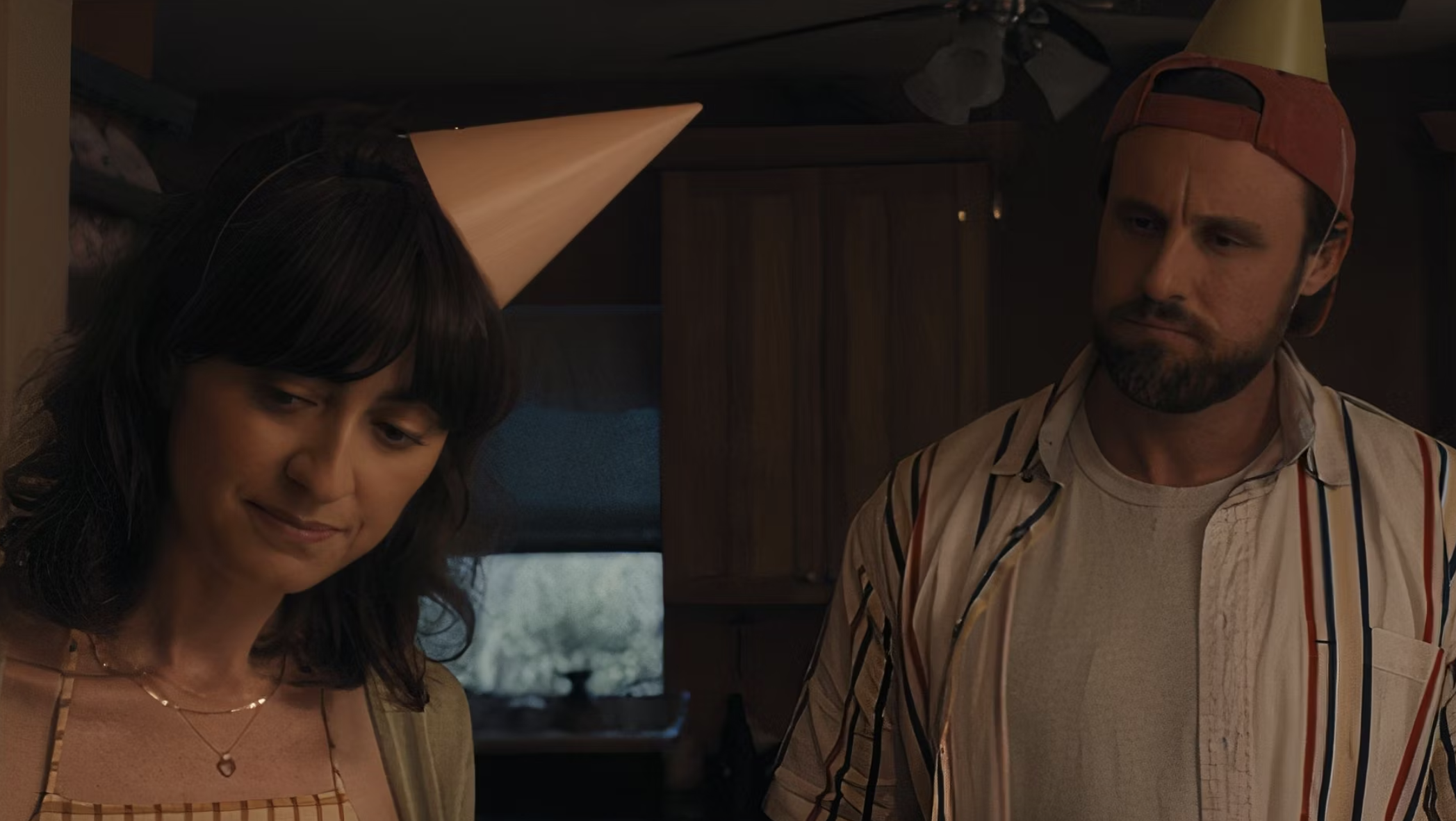
As she goes through these iterations, conversations with Paula reveal questions to her—every time she finishes a time loop, does that timeline cease to exist? Or is it that every time she leaves that loop, that timeline continues, with those versions of her family having to live with her disappearance? Considering the number of iterations she has executed with these meetings with Paula bypassing her family, Zoya starts realizing that she is slowly missing them, further fueling her determination and, as a result, her frustration.
In one such iteration, when Paula tries to cheer her up, Zoya finally snaps, reminding her that she needs to go back to her family. That’s when Paula tries to remind her that she, too, is risking her job for essentially a lady who randomly comes to her apartment one day and furnishes an absurd story that she decides to follow through because Zoya isn’t the only one who wants to change something in her past.
As Paula explains to Zoya, when she was a kid, she had sneaked into her parent’s car and driven it, and a nail had driven through the tyre. In her carelessness, she had thought her parents would be able to figure out the problem. But her parents didn’t, and the tire would blow up, leading to, we presume, the death of Paula’s parents. So for her, we realize that this research is in effect a wish fulfillment for her. She is reminded of her own repeated tries to return to the week before her father died, but failing.
Where is Mark Harrison?
Paula’s reasoning gives her renewed enthusiasm, and she, in the immediate next iteration, bypasses the visit to Paula and instead sneaks out of the hospital, goes to her house, packs her bag, and then goes to the Community College, where she visits Dusseldorf, shuts his tirade, and asks for Harrison’s address.
Having acquired that, she takes a flight to Princeton, where she attends a reunion of the class of 1985, where a conversation with her former classmate introduces an unwelcome thought, but that is the first instance that seedling begins to burrow itself in her brain—maybe she has spent her entire life working on a problem that is impossible to solve. Perhaps life getting in her way made her happier, or at least that had been the implication, which Zoya somewhat resents, considering the statement demeaning.
The following day, she takes a taxi to Harrison’s address. However, upon reaching there, she learns that Mark has passed away quite recently. According to her son, whom she met at that house, Harrison had been so knee-deep in work that he had forgotten to eat or sleep. It is never entirely clear what he passed away from. Still, the implication the movie is trying to explain, slowly and surely, is that this is the life that Zoya might have been living had she actually continued with her research into the impossible problem.
As she explores Harrison’s lab, she sees that Harrison has all her research notes and has been working on solving that problem since his last breath. But as his son explains, adorned and choking with grief, his father could never understand that all this work wouldn’t have been necessary to make him proud in front of his son. He just needed his father. As she hugs Harrison’s son, the film’s thesis statement slowly starts to come into focus.
Omni Loop (2024) Movie Ending Explained:
How does Zoya break the time loop?

As the week ends, Zoya goes through the research notes while sitting on the grounds of Princeton, only to realize while looking through her notes that it doesn’t matter. As she goes through her messages, she is filled with grief upon hearing her husband and daughter’s panic-stricken messages at being unable to find her. Her nose starts bleeding, and then she suddenly starts to feel her chest constricting as she sees a small black hole threatening to expand from her chest. She barely manages to pop a pill in and is pulled back through time again.
Notably, she wakes up this time, a couple of hours before daybreak. Realizing how close she had been to being sucked into oblivion, she rushes outside the hospital room and hugs her daughter and her husband. In this iteration, Zoya decides she wants to live to her fullest with her family. She is receptive to her family’s attempts at humour. That night, as she cuddles in bed with her husband, she ponders whether, in an alternate timeline, she had lived a much fuller life, to which her husband sagely responds that it might be the case, but that could also be the timeline where she doesn’t meet her husband, and they don’t have a family together.
She decides to make small changes—donating all her books to the retirement home, spending as many hours on the beach with her daughter and family as possible, taking her mother out for trips—including visiting the last one-horned rhino in the world before it dies at the end of the week, encouraging her daughter to not give up on her piano lessons—a reinforcement of a previous scene where she could only watch helplessly as her daughter wallowed in her insecurities.
The final steps she takes are visiting Paula and giving her the notes of their research together, along with the pills, informing her that she knows about her past, and giving her blessing to continue the research. She even attaches a post-it note, instructing Paula to visit Adam Harrison, Mark’s son, perhaps to correlate the research. As the camera moves away from the tapestry of the story and the timelines, and the supporting characters Zoya interacts with in her sojourn in the time loop, we also see a hazmat-suited man in the subatomic region, looking up through the glass box, trying to communicate with the one human being in the outside world who cares.
The final gift she receives as part of her surprise birthday celebration is the announcement of her daughter’s pregnancy, shown through a CT scan of her pregnancy. She wonders whether this is a new addition or whether, in the previous moments, she had been so engrossed in herself that she couldn’t afford her daughter any opportunity to announce this good news. As they hug, the nosebleed begins again.
Realizing that this was the final moment, she bade them goodbye, professing her love for her family, especially her husband, with her husband also acknowledging that he couldn’t have asked for a better week. She is finally sucked into the void, and the last we see of her is presumably her standing independent of time, watching her younger self amble across the grassy knoll. As her younger self finds the pills, she whispers in her ear that she will be doing great things before disappearing away.
The only method to break the loop is the realization to not be in the loop in the first place. One can deduce that the black hole originated due to prolonged usage of those pills by Zoya, but through interactions with Paula, as well as with her former classmate and Mark’s son, she realizes a way to secure her legacy, as well as come to terms with a version of a world that would have occurred had she actually been knee-deep in research and had lost all the emotional anchors that tied her together. “Omni Loop” is a sci-fi movie that only uses sci-fi as a substrate to explore a heartfelt message about love, one’s familial connections, and the power to acknowledge and move on.





